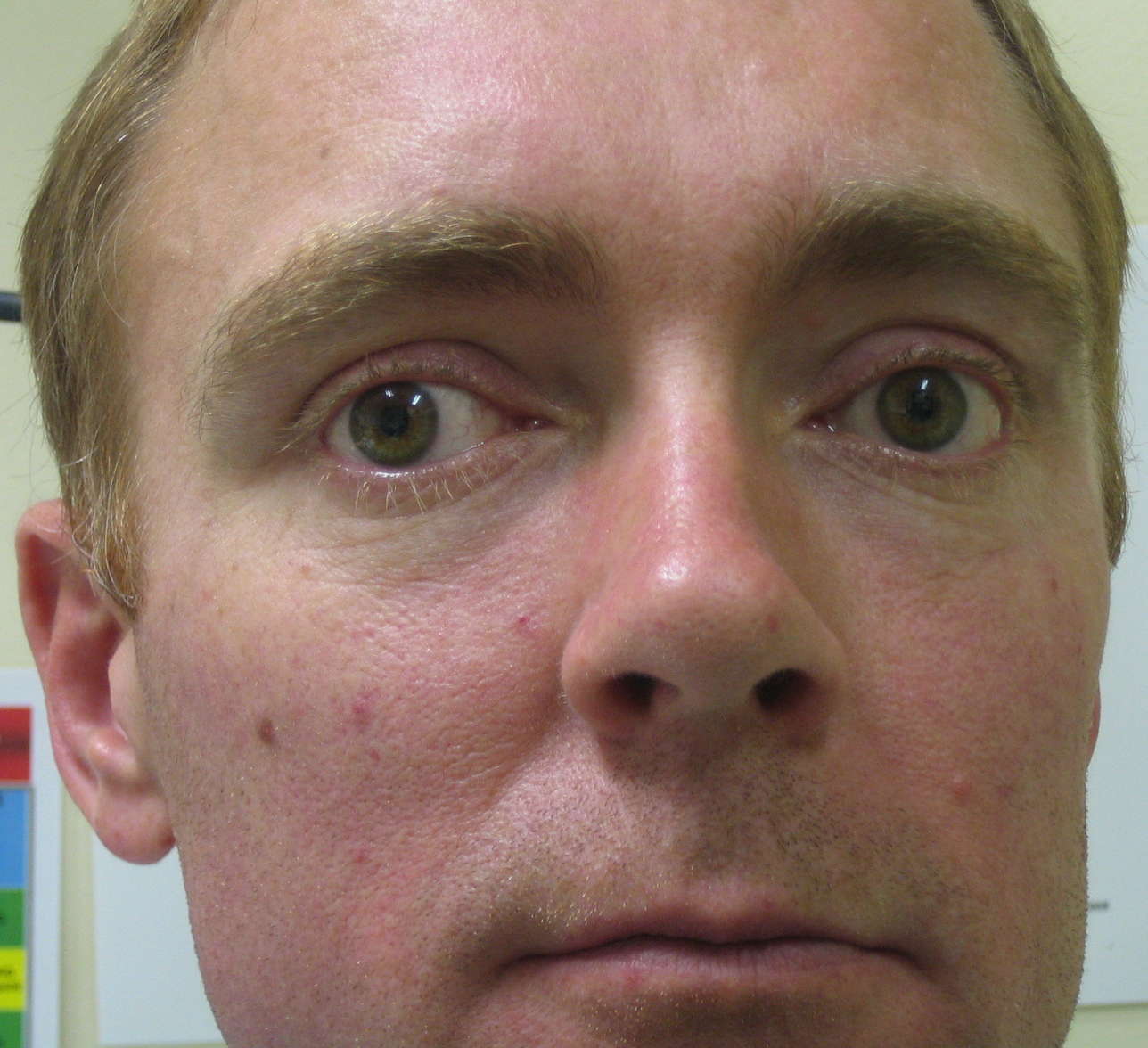6 Strabismus
6.10 Consecutive Exotropia
Consecutive exotropia refers to an exotropia that develops following a prior esotropia. It may have features of a paresis (because of underaction of the medial rectus) or restriction (because of tightening / fibrosis of the lateral rectus). Causes include:
- Post-operative following exotropia surgery (infantile or accommodative ET)
- Spontaneous
1. Visual Acuity (Best Corrected)
- Exotropic eye may be amblyopic
2. Spectacles
- BI prism- apex points towards the deviation
3. Inspection
- Abnormal Head Position (AHP) - head turn to the opposite side
- Hirschberg (pupil margin=30Δ, limbus=90Δ) - Exotropia
- (Lids normal) - must exclude CNIII palsy
- (Pupils normal) - must exclude CNIII palsy
- ± Conjunctival scarring of prior surgery
4. Cover-Testing
- Exotropia greater on head turn to same side (i.e. incomitant)
5. Ocular Rotations
- Limitation of adduction
- ± X-pattern (SO / IO tightening)
“Paretic”
MR Underaction (Slipped or Over-recessed)
Restrictive
LR Tight / Fibrosed (over-resected)
Ductions
“Paretic”
MR Underaction (Slipped or Over-recessed)
> Versions
Restrictive
LR Tight / Fibrosed (over-resected)
= Versions
Saccades
“Paretic”
MR Underaction (Slipped or Over-recessed)
Slow
Restrictive
LR Tight / Fibrosed (over-resected)
Normal (outside range of restriction)
6. Saccades
“Paretic”
Restrictive
Saccades
“Paretic”
Slow
Restrictive
Normal (outside range of restriction)
7. Dilated Fundus Exam
- Exclude sensory exotropia (macular scar, optic nerve hypoplasia)
8. Measurements
- BI prism on affected side
9. Forced Duction / Generation Testing
“Paretic”
MR Underaction (Slipped or Over-recessed)
Restrictive
LR Tight / Fibrosed (over-resected)
Forced Duction
“Paretic”
MR Underaction (Slipped or Over-recessed)
Normal
Restrictive
LR Tight / Fibrosed (over-resected)
Abnormal
Forced Generation
“Paretic”
MR Underaction (Slipped or Over-recessed)
Abnormal
Restrictive
LR Tight / Fibrosed (over-resected)
Normal
10. Assess the Risk of Post-operative Diplopia
- Prism subjective test (place BI prism over affected side)
- Synoptophore (measure size of suppression scotoma)
- Botox to LR
11. Assess Suitability for Adjustable Sutures
- Can the patient tolerate forced duction testing?
- Does the patient subjectively feel they could cope?
Next
7.0 Introduction
All rights reserved. No part of this publication which includes all images and diagrams may be reproduced, distributed, or transmitted in any form or by any means, including photocopying, recording, or other electronic or mechanical methods, without the prior written permission of the authors, except in the case of brief quotations embodied in critical reviews and certain other noncommercial uses permitted by copyright law.
Vitreoretinal Surgery Online
This open-source textbook provides step-by-step instructions for the full spectrum of vitreoretinal surgical procedures. An international collaboration from over 90 authors worldwide, this text is rich in high quality videos and illustrations.

